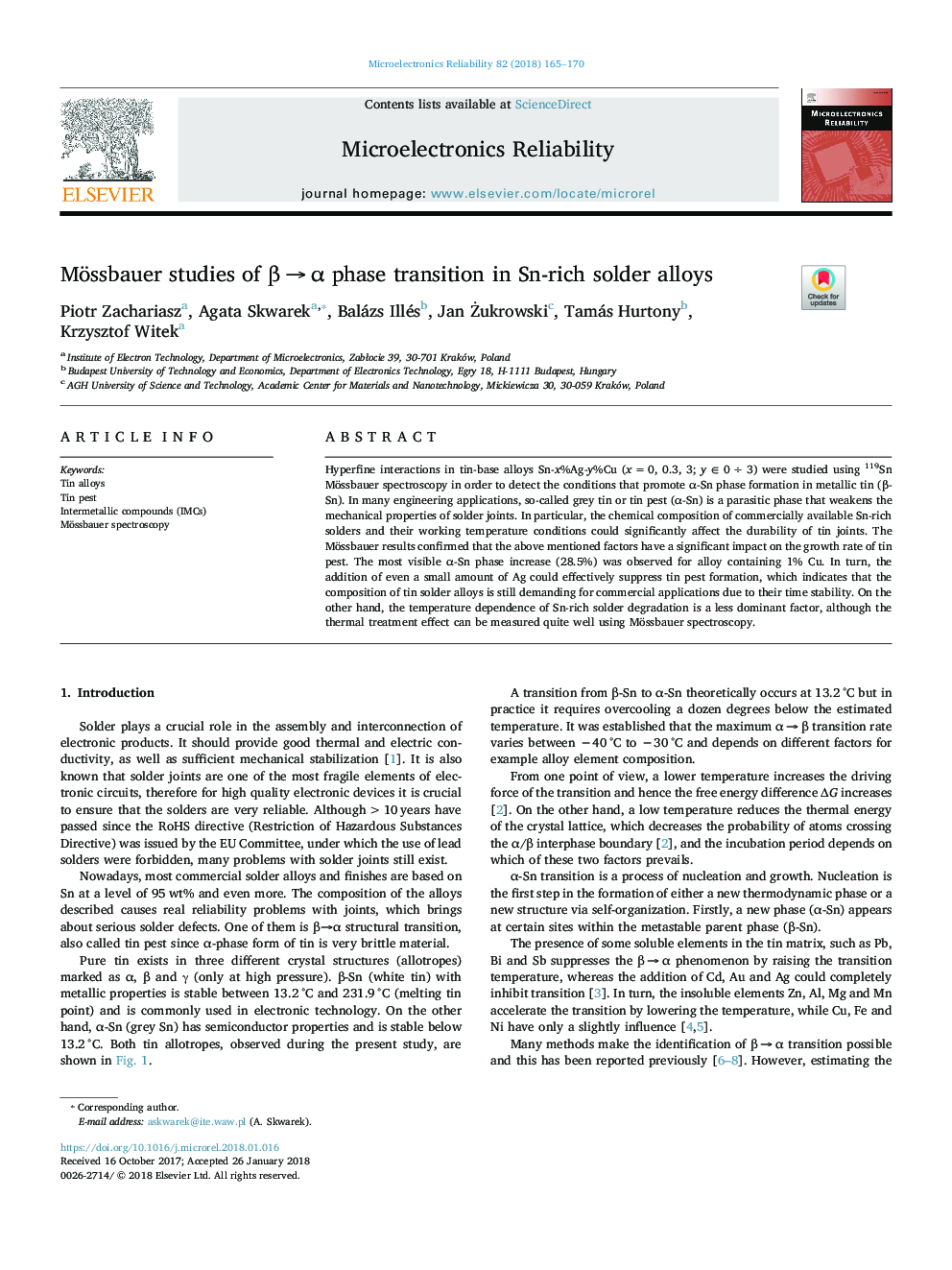| Article ID | Journal | Published Year | Pages | File Type |
|---|---|---|---|---|
| 6945801 | Microelectronics Reliability | 2018 | 6 Pages |
Abstract
Hyperfine interactions in tin-base alloys Sn-x%Ag-y%Cu (xâ¯=â¯0, 0.3, 3; y â 0â¯Ã·â¯3) were studied using 119Sn Mössbauer spectroscopy in order to detect the conditions that promote α-Sn phase formation in metallic tin (β-Sn). In many engineering applications, so-called grey tin or tin pest (α-Sn) is a parasitic phase that weakens the mechanical properties of solder joints. In particular, the chemical composition of commercially available Sn-rich solders and their working temperature conditions could significantly affect the durability of tin joints. The Mössbauer results confirmed that the above mentioned factors have a significant impact on the growth rate of tin pest. The most visible α-Sn phase increase (28.5%) was observed for alloy containing 1% Cu. In turn, the addition of even a small amount of Ag could effectively suppress tin pest formation, which indicates that the composition of tin solder alloys is still demanding for commercial applications due to their time stability. On the other hand, the temperature dependence of Sn-rich solder degradation is a less dominant factor, although the thermal treatment effect can be measured quite well using Mössbauer spectroscopy.
Related Topics
Physical Sciences and Engineering
Computer Science
Hardware and Architecture
Authors
Piotr Zachariasz, Agata Skwarek, Balázs Illés, Jan Å»ukrowski, Tamás Hurtony, Krzysztof Witek,
